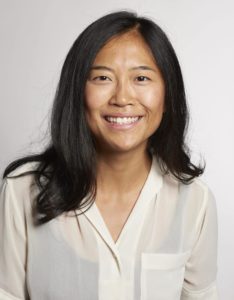Removing stigma: How advocacy, education and research enhances access to evidence-based care
To make an impact in patients’ lives, you have to lend your voice to advocacy efforts, said Linda Wang, MD, Assistant Professor of Medicine at the Icahn School of Medicine at Mount Sinai, who

says that her work in social justice plays a critical role as a medical educator and physician who treats patients with substance use disorders.
Dr. Wang is one of the physician leaders in the Respectful and Equitable Access to Comprehensive Healthcare (REACH) Program at The Mount Sinai Hospital in New York, which provides primary care and other services to people who use drugs, including buprenorphine treatment for opioid use disorder, treatment for hepatitis C virus infection, and mental health care.
“I’ve seen firsthand that when we incorporate harm reduction and social justice into our practices, we can build improved therapeutic relationships with our patients and defeat the fear that stigma creates about substance use disorders,” said Dr. Wang. “My students and residents also see that when they ask open-ended questions to people who use drugs, the patient often opens up about a wide variety of issues that can then be discussed in a positive manner. It doesn’t always result in immediate intervention, however, but we try to meet patients where they are – positive change is often a step-by-step endeavor.”
Dr. Wang explained that she has helped build the buprenorphine program in REACH over the course of several years. With the support of the hospital, she and other physicians have expanded the availability of buprenorphine in primary care and hospital settings at Mount Sinai Hospital using an interdisciplinary, team-based care model. They also have plans to expand access to buprenorphine at a partnering syringe services program in New York.
During the COVID-19 pandemic, Dr. Wang and her colleagues also have taken advantage of federal flexibilities to begin patients on buprenorphine and maintain connections with patients using telemedicine. Dr. Wang detailed in a recently published study, that for her and her colleagues, “Our clinical experiences during COVID-19 convince us that telemedicine for buprenorphine initiation is eliminating many of these barriers to treatment. We have witnessed that this regulatory change is vital to achieving greater health equity for [people who use drugs] and advocate that it should be permanently maintained to save more lives.”
Beyond the clinic, Dr. Wang also has been part of efforts to expand care to buprenorphine using a physician-led, nurse care manager model. The model has been successful in New York City to attract more than 100 new buprenorphine providers and using nurse care managers to help maintain connections with patients. Between 2016-2020, the model began treatment for more than 1,200 patients across 27 clinics. Data from study showed that the 74 percent of patients were on Medicaid, 42 percent “identified as Latinx or Hispanic,” and 21 percent identified as Black.
“We need to be innovative in care delivery models,” said Dr. Wang. “And by building out a health care team, we also can positively address long-standing health inequities.”
In addition, Dr. Wang explained that advocacy also includes speaking up at her institution for increased substance use education for students and residents. She has helped incorporate education for all first-year medical students that teaches about stigma and the importance of using non-stigmatizing language. Additional stigma-related and addiction care lectures are included for second year and throughout a resident’s training.
The continued education also teaches students and internal medicine residents about the diagnosis and treatment of substance use disorders. This has also helped create opportunities for trainees to talk with patients about the importance of naloxone to prevent overdose.
“It’s my responsibility to help explain and teach addiction as a chronic medical condition—just like diabetes,” said Dr. Wang. “Just as my students and residents need to know when to potentially start a patient on insulin, it’s essential they know when to start a patient on buprenorphine.”
One example of a breakthrough moment Dr. Wang recalled was when a resident put in his notes that a patient had “opioid use disorder,” as opposed to “patient who was a heroin abuser.”
“This was important because the patient should not be defined by their drug use, especially in medical documentation that could potentially be seen by dozens of providers and can negatively impact clinical care. The resident should be diagnosing a medical condition using clinically accurate and non-stigmatizing language,” said Dr. Wang. “This is what we teach from the start, and what we continue to reinforce.”